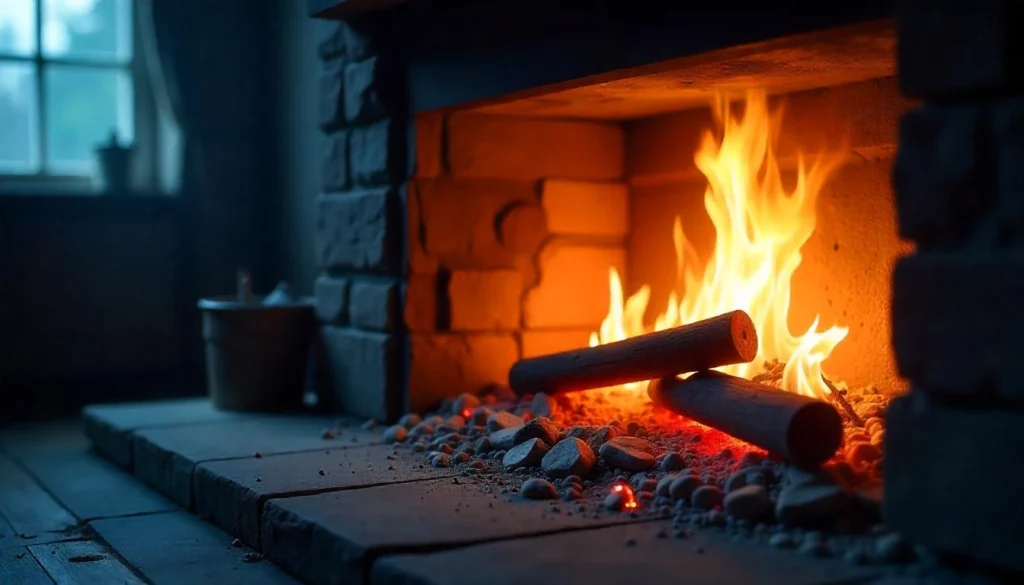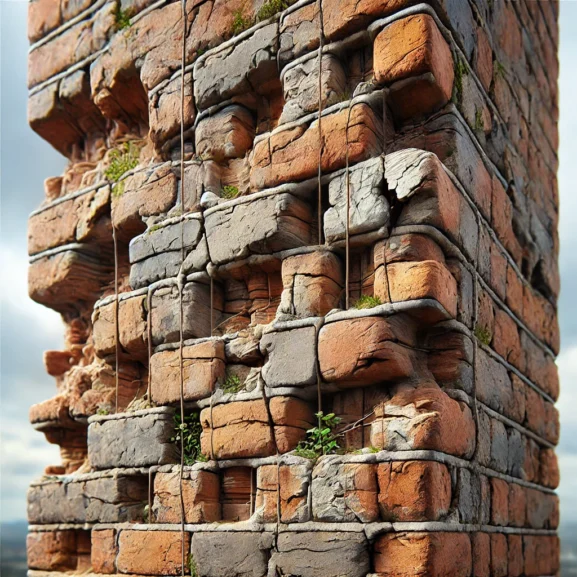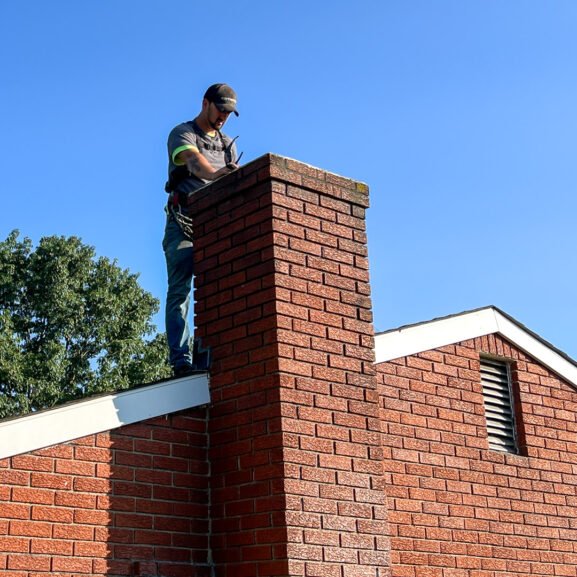How to Identify and Repair Fireplace Smoke Chamber Cracks for Safety and Efficiency
As the weather cools and we gather around our fireplaces, the comforting warmth can sometimes mask hidden issues. One such problem is cracks in the smoke chamber, which can lead to significant safety hazards if left unchecked. These cracks may seem minor at first, but they can allow smoke and dangerous gases to seep into our living spaces, putting our health at risk.
Understanding the causes and consequences of smoke chamber cracks is crucial for maintaining a safe and efficient fireplace. Over time, factors like heat stress, moisture, and poor construction can contribute to these fractures. By identifying and addressing them early, we can prevent costly repairs and ensure our fireplaces remain a cozy centerpiece in our homes. In this text, we’ll explore the common causes of smoke chamber cracks, how to spot them, and the best strategies for repair and prevention.

Fireplace Smoke Chamber Cracks: What Every Homeowner Should Know
Fireplace smoke chamber cracks might seem small but can lead to big problems. Air leaks from these cracks allow combustion gases to escape, posing safety hazards. Home heat can decrease, too. Cracks can happen due to thermal expansion. Cold winters can make this worse, unlike other areas.
Causes of Cracks:
- Heat Stress: Frequent heating and cooling weaken the chamber.
- Moisture Damage: Rain and snow seep into masonry.
- Poor Construction: Incorrect smoke chamber design can contribute.
Why You Should Care:
- Safety First: Harmful gases in your living room? No, thanks.
- Structural Damage: Cracks can lead to bigger repairs.
Common Causes of Smoke Chamber Cracks
Cracks in fireplace smoke chambers are more common than you’d think. These sneaky culprits can lead to serious structural damage. Let’s explore some typical causes.
Thermal Expansion and Contraction
Masonry expands with heat during every cozy fire. It contracts when it cools. This constant expansion and contraction stress the structure. Over time, cracks form, impacting smoke chamber integrity.
- Extreme Temperature Changes: Winters get chilly. The extreme shifts from warm fires to freezing nights are tough on chimneys.
- Frequent Use: Love those crackling fires? Frequent use equals more cycles of expansion and contraction.
Good fireplace installation helps, but regular chimney inspection is key. Catch the cracks early.
Structural Shifts
We’re talking about house settling. Homes naturally shift over time, and these shifts stress the chimney structure.
- Foundation Settling: As houses settle, they tug at the chimney. This stress can lead to cracks.
- Building Materials: Different materials expand differently. Bricks and mortar may not always play nice together.
A solid smoke chamber design helps prevent these issues, but nothing beats a good chimney inspection. Remember, DIY is not the answer here. For crack sealing, reach out to experts for consultation. Better safe than sorry!

Water Damage and Moisture
Moisture damage is a sneaky villain in our fireplace saga. Rain and snow are relentless foes.
- Chimney Crown: A cracked or missing crown invites water in.
- Sealant Issues: Old or missing sealants fail to protect against moisture.
Proper masonry work and regular maintenance keep water at bay. Stay warm and cozy by keeping moisture out.
Signs and Symptoms of Smoke Chamber Cracks
Fireplace smoke chamber cracks are sneaky, but they leave clues. Identifying these signs can help prevent serious problems. Let’s explore what to look out for.
Visible Cracks and Gaps
Cracks and gaps aren’t just badges of experience for your masonry. They signal potential safety hazards and inefficiencies. Look for:
- Lines in Mortar: Small gaps in the mortar can expand over time.
- Gaps Between Bricks: These can allow harmful gases to escape into your home.
- Chipped Masonry: Damage might indicate bigger structural problems.
Seeing any of these? reach out to professionals for consultation! Ignoring them could lead to more costly repairs.
Smoke and Fume Infiltration
Notice an unexpected smoke cuddle in your living room? It’s a sign:
- Smoke in Rooms: It indicates cracks in the smoke chamber or flue issues.
- Unpleasant Odors: Lingering smells can mean combustion gases are seeping in.
- Eye or Throat Irritation: Irritation suggests harmful gases aren’t properly venting.
For effective chimney inspection and repair options, contact experts now. DIY fixes can make things worse!.
Inefficiency in Smoke Draw
Poor smoke draw makes fires inefficient and frustrating. Look for:
- Smoke Backdraft: Smoke exiting into the room instead of the flue.
- Excessive Ash: More ash than usual might mean a block elsewhere.
- Lower Heat Output: A less cozy fire suggests compromised heat retention.
Inspection and Diagnosis
Fireplace smoke chamber cracks can be sneaky culprits of poor fireplace performance. Ignoring them can lead to safety hazards and awful odors in the living room.
Professional Chimney Inspection
Our professional chimney inspection is like a doctor’s check-up for your fireplace. We check for signs of cracks, air leaks, and combustion gas escape. Here’s what we do during the inspection:
- Visual Examination: A thorough inspection of the smoke chamber and flue for visible cracks and structural damage.
- Test for Leaks: Identify air leaks impacting fireplace efficiency and safety.
- Masonry Integrity Check: Assess the masonry work, looking for loose bricks or damaged mortar.
Unique challenges like the cold winters and heavy snow, can escalate moisture damage. This inspection is vital for maintaining your fireplace’s health.
Ignoring a crack is like trying to ignore hunger—eventually, things could get hangry. It’s crucial to reach out to professionals for consultation before small issues turn into big repairs.
Chimney repair services are essential to tackle any problems we discover. Remember, our inspection services are designed to catch the issues early and prevent them from becoming costly nightmares.
Repairing Fireplace Smoke Chamber Cracks
Addressing cracks in the smoke chamber of fireplaces ensures safety and efficiency. Proper repairs prevent air leaks and contain combustion gases within the chimney.
Common Repair Techniques
Common repair methods target smoke chamber integrity. Parge the chamber (apply a thick layer of mortar) to smooth surfaces and seal gaps. It boosts heat retention and reduces air leaks. Choose refractory mortar for durability under high temperatures. Reinforce cracked masonry by filling gaps with specialized crack sealant designed for fireplaces. Carry out smoke chamber design changes to prevent future cracks, such as altering size or shape if needed.
Regular maintenance prevents structural damage and supports chimney health. Keep an eye out for thermal expansion and moisture damage before they lead to costly repairs. For residents facing cold weather and heavy snow, addressing potential issues promptly ensures fireplace safety. Reach out to professionals for consultation.
Hiring Professional Services
Professional chimney repair services provide expertise in crack repair. Trained technicians identify hidden cracks and structural damage. Regular inspections highlight repair options before minor cracks escalate. American homeowners benefit from professional repairs, especially residents with unique climate challenges.
Preventative Measures
Preventing smoke chamber cracks protects against safety hazards and keeps fireplaces efficient. Regular maintenance can help avoid costly problems.
Routine Maintenance and Cleaning
Consistent fireplace maintenance reduces the risk of cracks and keeps the chimney working well. Scheduling regular chimney cleanings ensures a long life for the system.
- Chimney Inspections: Experts should check for air leaks and structural damage to catch early signs.
- Cleaning: Soot and creosote removal prevents blockages and combustion gases buildup.
- Moisture Control: Waterproofing stops moisture damage, especially vital in the wet seasons.
We recommend relying on professionals for these tasks. Check Chimney Safety Institute of America for more on chimney care.
Addressing Structural Weaknesses
Fixing potential structural issues strengthens the smoke chamber. This limits cracks that can arise from thermal expansion and moisture damage.
- Professional Assessment: Identify weak masonry work early.
- Crack Sealing: Use approved methods to seal and reinforce the smoke chamber.
- Heat Retention: Parging with refractory mortar helps retain heat efficiently.
Weather can cause structural shifts. It’s like the universe giving your chimney a yearly stress test! For serious support, our chimney repair services have got your back. Learn more about fireplace safety from the National Fire Protection Association.
The Importance of Addressing Smoke Chamber Cracks
Addressing fireplace smoke chamber cracks is crucial for maintaining a safe and efficient home heating system. By staying vigilant and prioritizing regular inspections and professional repairs, we can prevent minor issues from escalating into significant hazards. Our commitment to routine maintenance and expert guidance ensures that our fireplaces remain cozy and secure, providing warmth and comfort during the colder months. Let’s take proactive steps to safeguard our homes and enjoy the peace of mind that comes with a well-maintained fireplace.
Frequently Asked Questions
What are the common causes of smoke chamber cracks in fireplaces?
Cracks in a smoke chamber often result from thermal expansion due to frequent heating and cooling. Other factors include moisture damage from rain and snow, structural shifts as a house settles, and poor initial construction design. These stresses on the masonry can lead to gaps and cracks that compromise fireplace safety and efficiency.
How can cracks in the smoke chamber affect my living space?
Smoke chamber cracks can allow smoke and harmful gases to seep into living areas, posing health risks. Additionally, they decrease the fireplace’s heat efficiency, resulting in higher energy costs and a less cozy home environment.
How can homeowners detect cracks in their smoke chamber?
Homeowners should look for visible signs like cracks in mortar, gaps between bricks, and chipped masonry. Other indicators include smoke infiltrating living spaces, unexpected odors, and reduced heat output from the fireplace.
Why is professional chimney inspection important?
Professional inspections identify hidden issues such as cracks, air leaks, and structural weaknesses. Experts assess the masonry’s integrity, ensuring fireplace safety and efficiency. This is especially crucial in regions with challenging climates, where cold winters and heavy snow increase moisture damage risks.
What repair techniques are recommended for fixing smoke chamber cracks?
Commonly used techniques include parging the chamber with refractory mortar, which seals gaps and enhances heat retention. It’s vital to conduct regular maintenance to identify and address thermal expansion and moisture issues before they require costly repairs.
How can I prevent smoke chamber cracks in my fireplace?
Preventive measures include regular chimney maintenance and cleaning, expert inspections to identify air leaks and structural damage, and moisture control, especially during wet seasons. Proactively addressing these issues helps maintain an efficient, safe fireplace.
Is DIY repair of smoke chamber cracks advisable?
DIY repairs can be risky and might not effectively seal cracks, potentially worsening the problem. Professional repair services are recommended to ensure cracks are properly addressed, maintaining the safety and efficiency of your fireplace.


